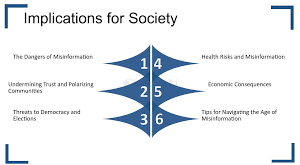Innovation and funding in Cleantech Grows: a new generation of Sustainable development
The twenty-first century is observing a revolutionary wave of innovation across a couple of industries; however, few regions are experiencing as much dynamic exchange and investment as the cleantech zone. As the global economy reaches a turning point toward sustainability,
so too has Cleantech become a hot button for investors, governments, and technology leaders. The growth in this sector is fueled through a combination of environmental imperative, technological milestones, and shifting market forces all focused on shrinking human impact on the environment while catalyzing economic development.
This article will explore how the latest innovation and increased funding in cleantech are forming the future of industries and fostering sustainability in view of that.
Cleantech: The Revolution Begins-Driver of Growth
The upwards jab of cleantech is a response to the dire need for sustainable answers to international challenges such as weather alternate, resource shortage, and pollutants. These drivers have made cleantech one of the most essential innovation areas nowadays.
1. Climate Trade and Policy Strain:
Governments and global bodies are time and again passing legislation toward carbon emission decrease, electrical efficiency, and the selling of sustainable practices. Those regulations are spurring funding in renewable electricity, strength garage, electric vehicles, smart grids, and carbon seize applied sciences.
With weather accords just like the Paris Agreement urging countries to limit international warming to one.five°C above pre-business tiers, the stress on industries to undertake purifier era has by no means been bigger.
2. Market Demand for Sustainable Solution:
Due to increasing ecological awareness on the part of consumers and organizations, the demand for sustainable services and products is going up. This shift in market forces has resulted in increased investment in cleantech startups,
which are working on everything from sustainable agriculture to green buildings, waste reduction, and water conservation.
Three. Technological changes:
Inclusion of Artificial Intelligence, big data, and biotechnology into technology has brought rapid evolution and thus innovation in cleantech.
For example, AI is making energy use efficient, and innovative ways relating to battery technology are finding better ways of storage of renewable energy. Furthermore, development in material sciences is allowing for designing highly efficient photovoltaic panels, wind turbines, and energy-efficient appliances.
Four. Cost Cuts:
The price of renewable energy has plummeted in the past ten years. Solar PV and wind electricity have become some of the cheapest types of power, even undercutting fossil fuels in most locations.
This has been a game-changer for the industry as it attracts serious investment, since investors finally see cleantech not only as a socially conscious choice but as a financially lucrative one as well.
Funding Trends in Cleantech
The segment has seen a rise in funding by venture capital, private equity, and institutional investors. BloombergNEF reports global investment in energy transition technologies-like renewables, power storage,
and electric mobility-surpassing $500 billion in 2020, a new record for the planet. Strong growth has continued into 2021 and 2022.
1. Venture Capital and Startups
Cleantech startups have had a significant driver in venture capital investment. Between 2013 and 2020, mission funding in cleantech grew from $7 billion to over $sixteen billion in new highs that showed the growing appetite for innovation in sustainability.
From renewable energy and electric vehicles, investors are eying a host of sectors that include sustainable agriculture, water preservation, and advanced materials.
Startups such as Tesla, Beyond Meat, and Rivian are household names because of their disruptive enhancements in electric automobiles, plant-based proteins, and sustainable transportation, respectively.
These companies have not only attracted huge VC funding but have gone public to give retail investors a chance to participate in the cleantech boom.
2. Corporate funding and Partnerships
The big companies are also playing their role, crucial in driving cleantech innovation through investment, partnership, and acquisition. Companies such as Google, Microsoft, and Amazon have pledged billions to renewable electricity programs as part of their carbon-neutral and net-0 commitments.
Amazon’s Climate Pledge Fund, for instance, intends to invest $2 billion in sustainable technologies so that one can help attain the climate goals of the organization.
Company collaborations are also forcing innovation. For example, Preferred Motors partnered with LG Chem to provide a battery manufacturing plant. Even groups like Shell and BP have invested in renewable energy startups as they’re divesting from fossil fuels.
3. Government Support and Public Investment
Invest and support by authorities continue to be investment drivers for growing the cleantech industry. Many countries provide incentives and, except providing incentives for innovation or easy technology implementation, encompass subsidies and tax breaks for cleantech.
The Infrastructure Investment and Jobs Act presented by the US government consists of $65 billion for clean electricity programs, as well as electric vehicle infrastructure, grid modernization, and renewable energy projects.
These range from the eu Green Deal – which will mobilize at least €1 trillion in sustainable investments over the next decade toward its goal of a carbon-neutral eu by 2050 – to China, where the government has pledged to reach carbon neutrality by 2060 and has been making large investments in solar, wind, and electric vehicle technology.
Key Areas of Cleantech Innovation
Cleantech innovation cuts across many industries, with several regions of awareness that assuredly promise to revolutionize industries and improve environmental consequences.
1. Renewable strength and strength garage:
solar, wind, and hydroelectric power maintain to dominate the renewable electricity landscape. However, extra green and value-powerful strength storage solutions-advanced batteries and hydrogen garage systems-are critical to making sure the reliability and scalability of renewables.
Agencies like Tesla, Siemens, and BYD are in the frontline of this push, making a huge investment in garage solutions with an aim to strike grid balance and independence of electricity.
2. Electric Cars and Transportation:
The transportation sector is a huge transformation point where electrical motors, or EVs for their abbreviated name, are jostling upward in the markets, powered by self-sustaining use and smart transportation systems.
It is being advanced by companies such as Tesla, Rivian, and NIO, even as traditional automobile companies such as Ford and Volkswagen struggle to scale up their electric vehicle production.
Beyond passenger vehicles, cleantech is being adopted in public transport, freight, and aviation-fuelled by electric buses, electric-powered ferries, and even hydrogen-powered airplanes.
Three. Carbon Capture and Utilization: Carbon capture, utilization, and storage technologies are fast becoming vital tools in the fight against climate change. This technology captures carbon dioxide emissions resulting from industrial processes,
stores them underground, or puts them to use in products that include concrete and fuels. Companies like Carbon Clean and Climeworks pioneer innovations in the area, attracting good-sized funding as carbon discount becomes top-of-mind for the industries.
4. Sustainable Agriculture and food systems:
Even agriculture and food industries join the ride for Cleantech, which has innovations to reduce farming’s environmental impact, enhance meal protection, and promote sustainable diets. Vertical farming, precision agriculture, and lab-grown meats are some of the main areas of invention.
Startups such as AeroFarms, plenty, and Memphis Meats attract investors’ attention as they paint to change how we grow and eat food.
5. circular financial system and Waste control:
The idea of a circular economy-where minimal waste exists, and substances are returned for reusage or recycling-is catching on as an environmental model industries should adopt. Cleantech companies are researching new ways to recycle materials such as plastics,
metals, and electronics wastes, while other organizations are trying inventive ways to cut down on waste in manufacturing processes. Companies such as Loop Industries and AMP Robotics are the frontiers in this domain.
Challenges and Future Outlook
Notwithstanding the fast growth and funding into cleantech, challenges remain. Scaling of new technologies from prototype to industrial deployment is usually time-consuming and costly; additionally, most Cleantech startups need to overcome substantial financial and regulatory barriers.
On the other hand, clean energy and sustainable behavior require huge investments in infrastructure, which, for developing countries, is not that easy to afford.
In any case, the future prospect for cleantech is overwhelmingly high-quality. The growing imperative to take action on climate change, coupled with technological advances and supportive regulations, will continue to drive growth within the sector.
According to a report by the International Energy Agency (IEA), renewable power will make up almost 95% of the growth in global power capacity through 2025, illustrating the rising dominance of clean technology.
As innovation and funding in cleantech continue to ramp up, the world stands at the cusp of a new generation of sustainable development. From energy through agriculture, transportation to waste management, cleantech is promising to reshape industries and make the way for a cleaner, greener, and more resilient future.
Large growth potential, traders, promoters, and policymakers alike see cleantech as the future of enormous opportunity-a sector positioned to drive the global economy for decades to come.


